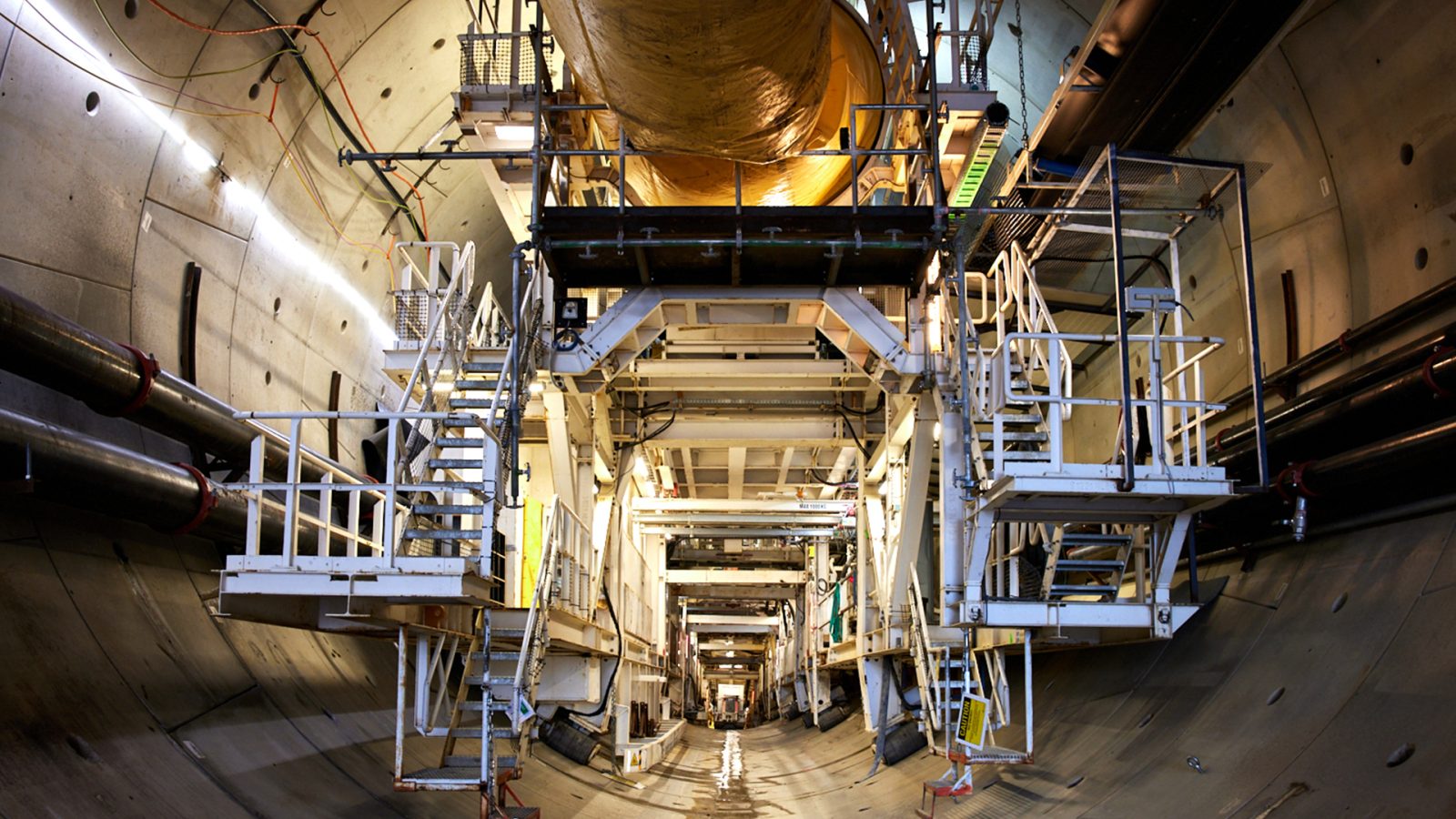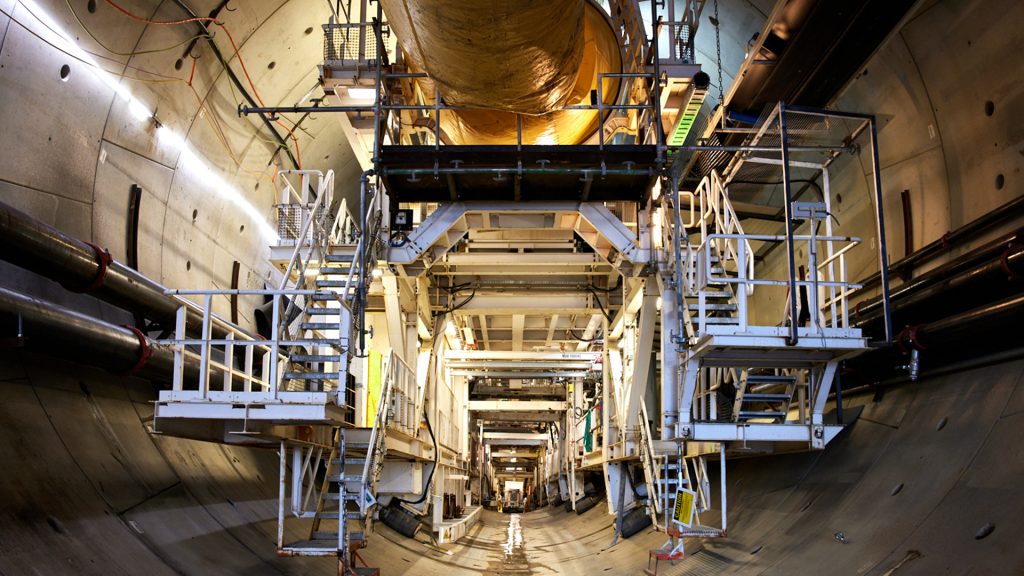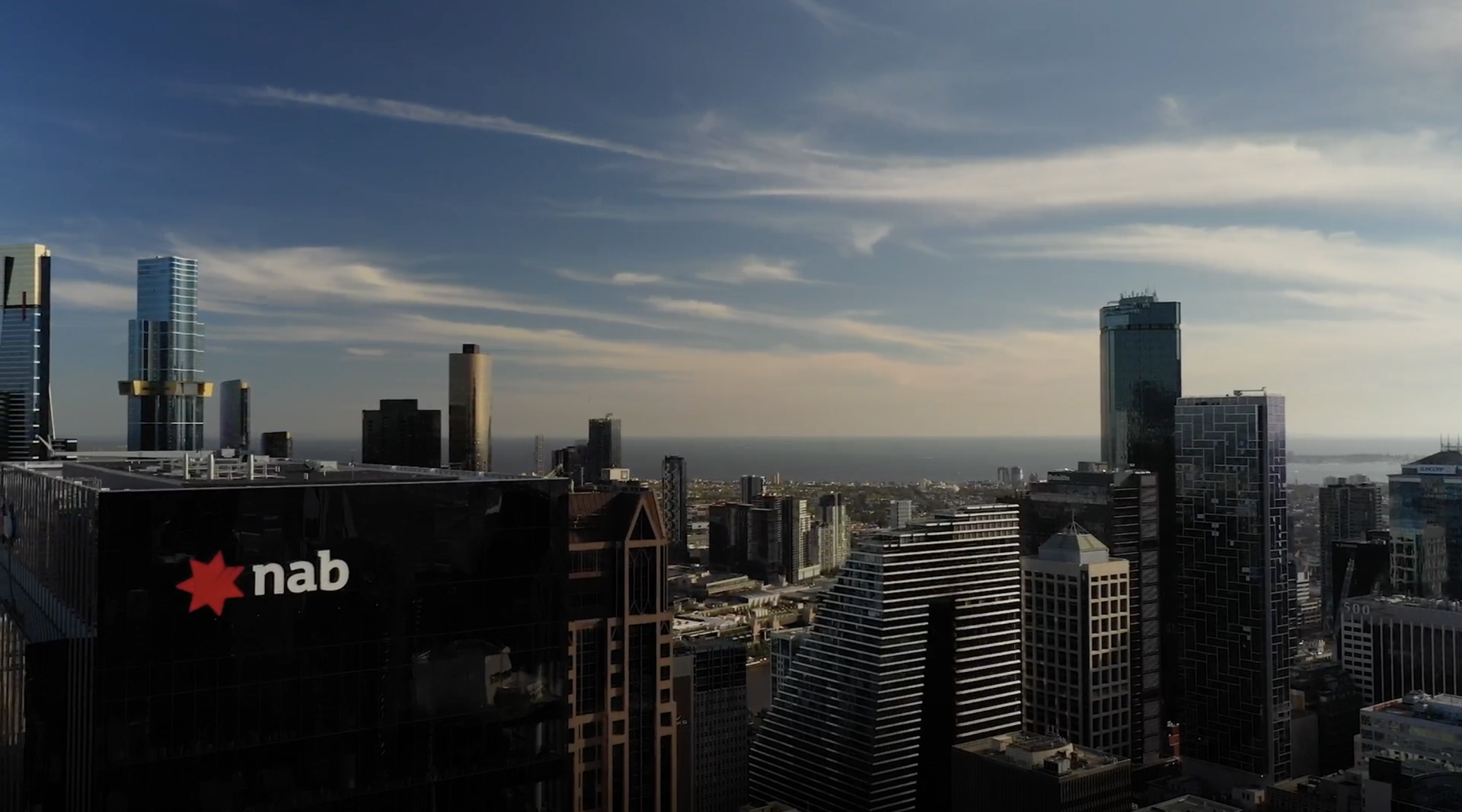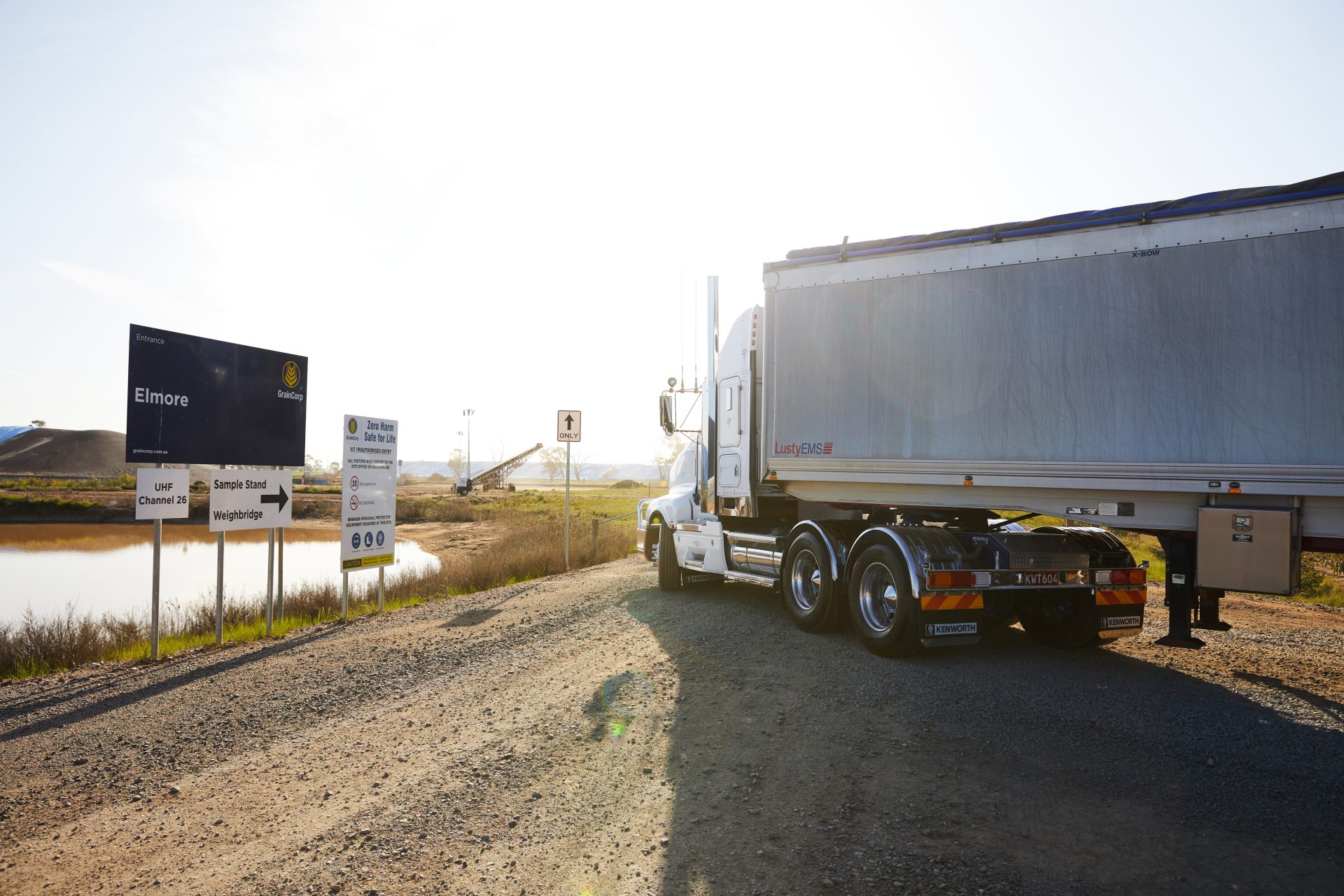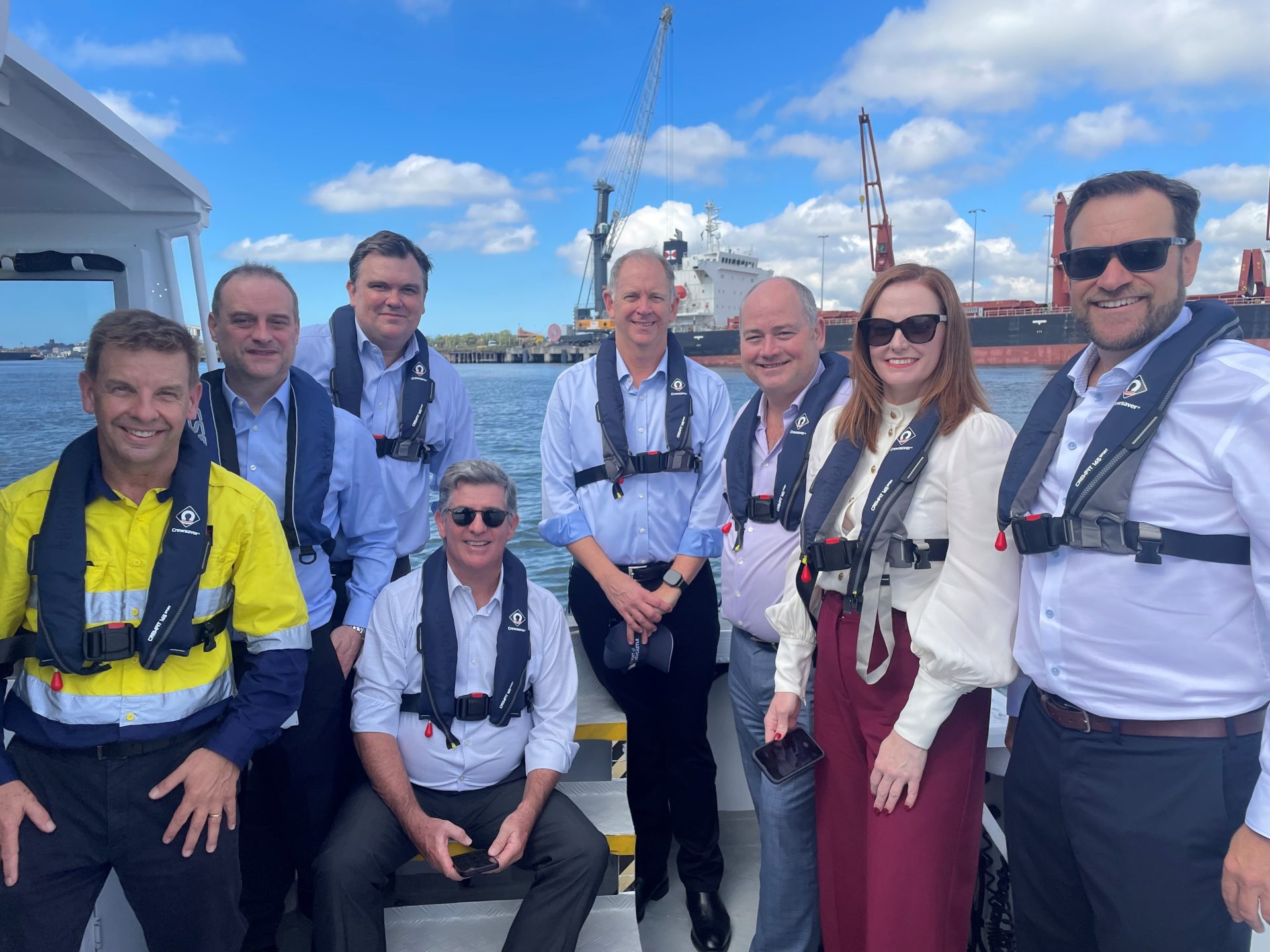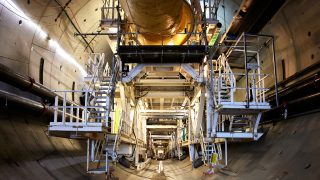
About 18 months ago, the welfare of Florence the tunnel boring machine became a subject of serious national concern.
As she lay stranded in unexpectedly soft ground deep inside the Snowy Mountains and a sinkhole appeared above her, the future of the country’s biggest renewable energy project and a key contributor to the 82 per cent renewable energy target by 2030 hung worryingly in the balance.
Florence didn’t move a great deal from December 2022 until December last year, as experts tried to figure out what to do and the forecast cost and timeline of the project blew out.
Eventually, she was switched to “slurry mode” to cope with the unstable soil and work recommenced, after the NSW Government granted planning approval for a project modification.
The reset project, priced at $12bn price-tag compared to an already-updated $6bn, is now scheduled to generate its first power in a so-called “wet” commissioning towards the end of 2027 before it transitions to full operation a year later.
Dennis Barnes, who became Snowy chief executive in February last year, said similarly ambitious projects had suffered because of the Covid pandemic, global supply chain constraints, and the simple fact that unanticipated events occur in complex engineering works.
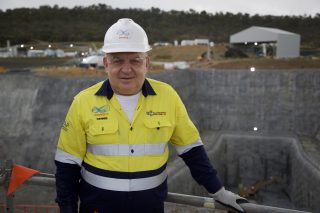
“The fourth reason for Snowy 2.0 was the geology, and there’s always the potential for it to still bring us undone,” Mr Barnes said.
“That’s the risk – you can only plan so far – but we’ve got the right equipment, the right people and the right commercial model, and we’re getting ahead of a lot of the risk.
“But you know, we’ve still got a lot of kilometres to drill.”
Snowy Hydro, of course, is much more than Snowy 2.0, which is a pumped hydro expansion of the Snowy Mountains scheme that will pump water through 27kms of tunnels between two existing dams.
The overall scheme has 16 major dams, 145kms of interconnected tunnels and pipelines, 80kms of aqueducts, 33 generators and eight hydro power stations, including pumped hydro at Tumut 3 in the Snowy Mountains foothills.
It has a capacity of 5500MW – the nation’s third-largest, with 2200MW more to come from Snowy 2.0 – and boasts 4250GWh of generation a year from 15 power stations, including three natural gas and four diesel as well as the eight hydro facilities.
Snowy is also the fourth largest retailer in the national electricity market (NEM).
In 2022, when the stability of the NEM was challenged by underperformance from coal generators, lower renewables and higher prices for coal and gas, Snowy played a pivotal role in keeping the lights on for retail as well as commercial and industrial customers across the NEM.
The contribution by Snowy to energy security has highlighted the importance of reliable firming generation and critical transmission infrastructure.
Also, with 94 per cent of its generation already coming from renewable sources, Snowy 2.0 only enhances the scheme’s strategic importance, with decarbonisation of the grid making a significant contribution to Australia’s twin targets of 82 per cent renewable energy by 2030 and net zero emissions by 2050.
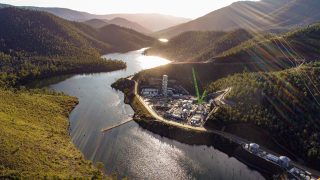
Snowy 2.0 by itself will slash emissions in the NEM by 28 per cent from 2022 levels and account for 13 per cent of the national emissions reduction target for 2030, according to the inaugural 2023 Snowy Hydro sustainability report.
The scale and cost of the project has attracted its share of critics; more so when you add a further $8.5bn for connecting new shared transmission networks to replace retiring coal plants.
Mr Barnes, however, remarked that the critics have often been short on detail when it comes to an alternative plan to achieve similar objectives.
“The energy trilemma has three components – sustainability or carbon emissions, accessibility which is effectively cost, and reliability,” he said.
“If you want the current generation fleet to keep running, it’s likely to be the most reliable and lowest cost because it’s all written down and the fuel supply chain is in place, but the problem is you don’t hit the third objective of sustainability.
“If Snowy as a company, and Snowy 2.0 as a significant proportion of that, is responsible for 28 per cent of the reduction in the NEM emissions, what else fills the gap when it’s not sunny or windy?
“I just don’t see how you get there without the likes of Snowy 2.0, the big batteries (for storage) and consumer energy resources. It’s a throw-the-kitchen-sink-at-the-problem time.”
The other important aspect of Snowy 2.0 is that it provides 160 hours of power storage, far greater than the typical 2-4 hours of capacity for most grid-scale lithium-ion batteries.
Mr Barnes said Snowy would “really come into its own” in periods of dunkelflaute – a German word to describe cloudy and still weather conditions that continue for days or weeks.
While batteries would also play a role in covering for the intermittency of wind and solar, they only provide backup for a few hours.
“We are by far the largest provider of deep storage, and we obviously believe there’s a return in providing that service,” the Snowy chief said.
“It’s only a proportion of the bill because it doesn’t make energy; it just moves energy between time zones.
“But if you don’t have something like Snowy 2.0, you don’t have a solar farm or a wind farm, so that’s the enablement it creates.”
As Snowy Hydro’s sustainability report said, firming capacity and storage from the company’s hydro and gas generating assets would be critical to achieving growth in variable renewable energy.
The company, it said, would deliver its Snowy 2.0 and Hunter Power gas projects in the next few years, providing 2860MW of on-demand, dispatchable energy required to help maintain energy security and reliability in the transition to a low-carbon grid.
In the meantime, with Florence again on the move since December, further risk was being removed from the project – albeit gradually – which was 54 per cent-complete at the end of February.
Florence’s task is to bore 15kms of the 17km headrace tunnel from the lake at the top of the mountain to the power station below.
Of the original job, 14kms remains, with Florence required to double her current work rate of 6-7m-a-day to about 13m-a-day if the revised schedule is to be met.
Mr Barnes said Florence was now tunnelling at an angle into the mountain, reducing the risk of subsidence.
“So it will go a bit faster,” he said.
“Also, it’s now likely that we’ll come in from the other end. It’s just a question of whether we get another (tunnel boring) machine or use conventional techniques. We’ll make a decision on how we approach it in the near future.”
Despite the civil engineering challenges encountered so far, including a more recent but thankfully brief pause caused by a tunnel breakthrough that occurred earlier than anticipated, Mr Barnes is adamant that the project still stacks up commercially.
He said financial modelling showed Snowy 2.0 has a net present value of $3bn, delivering a 7.4 per cent return on a $12bn cost.
So what happens in the future once the project is delivered? Will there be a Snowy 3.0, for example?
“There are plenty of potential projects throughout the Great Dividing Range but we’re not doing any work at the moment on what that might look like; we’re getting on with finishing Snowy 2.0,” Mr Barnes said.
“There are no plans on the table for a Snowy 3.0”

